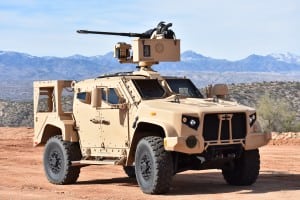
Army officials this week clarified that a reduction to the Joint Light Tactical Vehicle (JLTV) program will result in slowing down the planned buy over the next five years while keeping the current acquisition objective, a number that could potentially change as leadership conducts an assessment of its tactical vehicle fleet through 2020. Under Secretary Ryan McCarthy and Gen. Mike Murray, head of Army Futures Command, told reporters at the AUSA Global Force Symposium in Huntsville, Alabama, the previously announced…

 By
By 











